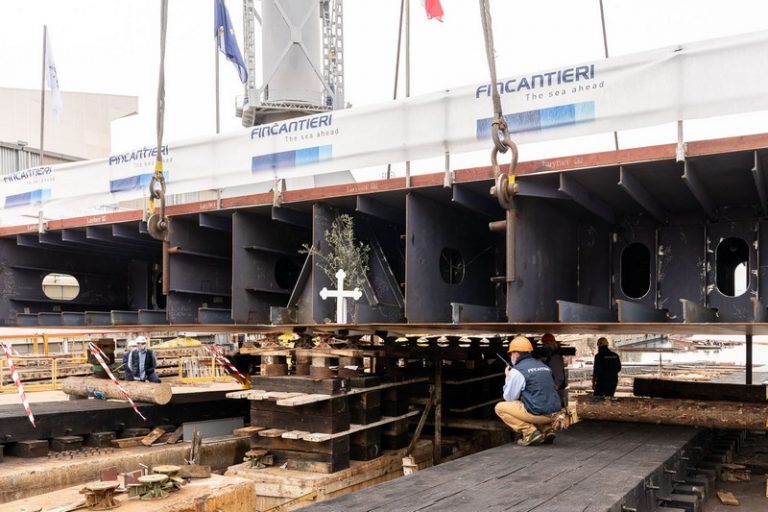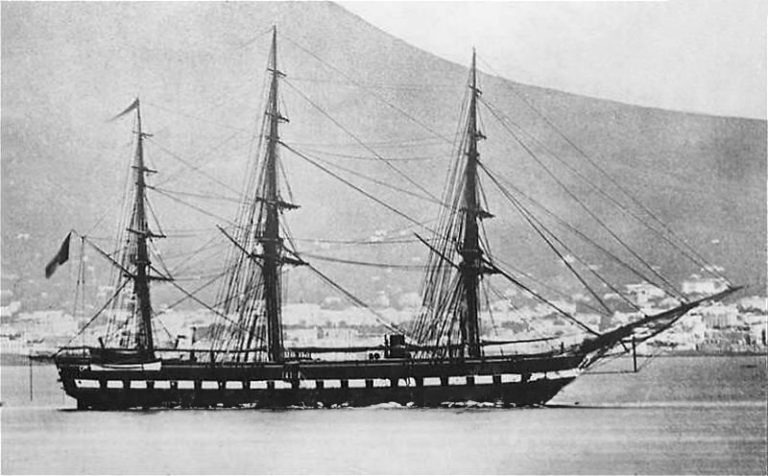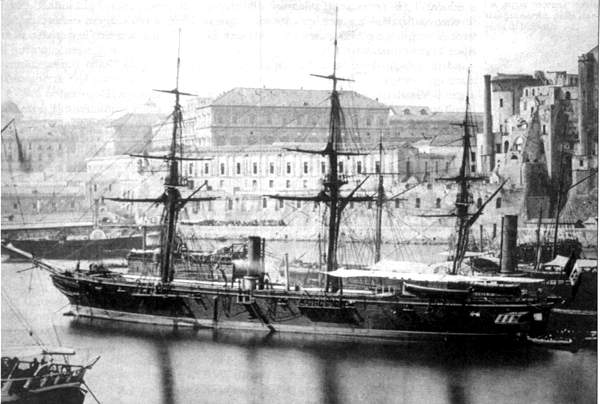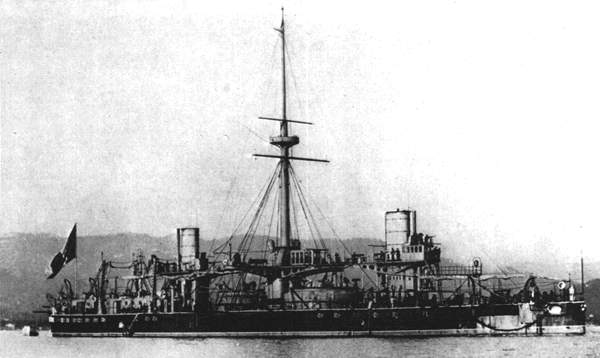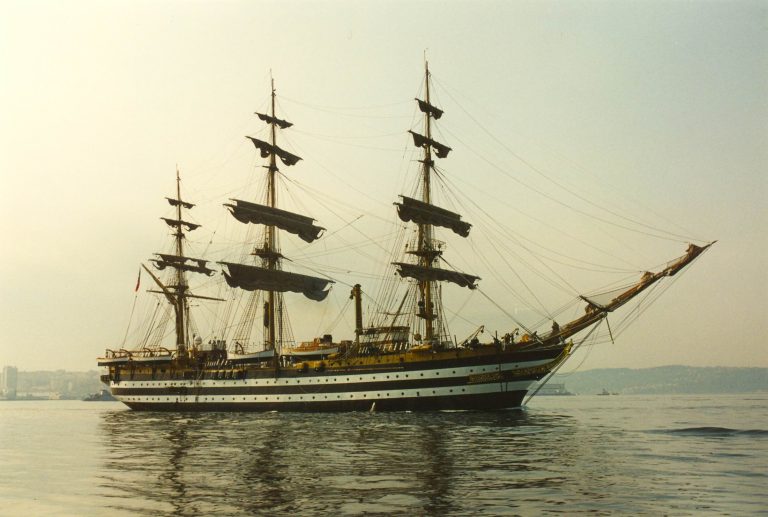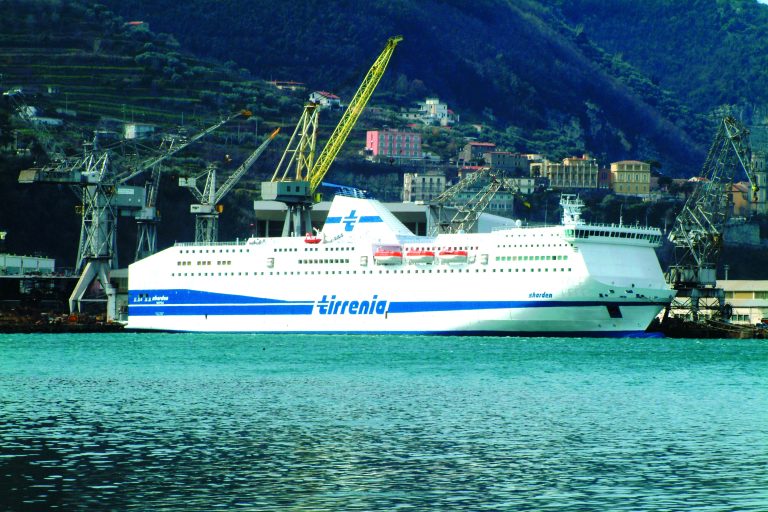Castellammare, Italy’s oldest shipyard
Enthusiasts of cruise ships remember the shipyard in Castellammare di Stabia for its construction of sections of cruise liners, later assembled with the rest of the ship at other Fincantieri group facilities.
The latest in this series is the Explora II by Explora Journeys, which was launched last January and then towed to Sestri Ponente, where the construction of the ship continued until its launch in September.
Few, however, are aware that the Stabia shipyard is the oldest in the Fincantieri group, and the genesis of the Italian shipbuilding industry is traced back to this site, well before the country was united under a single flag. The facility was founded in 1783 by Giovanni Edoardo Acton, the prime minister of King Ferdinand IV of Bourbon, and production began immediately with the construction of two small frigates for the Royal Navy of the Kingdom of the Two Sicilies, launched in March and October of the same year. These two units were built without construction numbers, so the number “1” actually went to the third ship launched, the corvette Stabia, which touched the sea for the first time on May 13, 1786. However, the first famous creation of the Stabia craftsmen is the large ship Partenope, still remembered today as one of the most powerful ships in the Neapolitan military fleet. Launched on August 16, 1786, it displaced approximately 3,000 tons and was 55.70 meters long and 14.40 meters wide.
Explora II laying of the keel
Corvetta_Etna
During the Napoleonic era, the shipyard was expanded in 1808 by order of Joachim Murat: the first launch after the enhancement of the facilities was the ship Capri (1810), followed by the launch of Gioacchino (1812). After the “Restoration,” production resumed slowly, and it was not until 1824 that another launch was seen, that of the ship Vesuvio, which reached a displacement of 3,500 tons.
In the mid-19th century, the turning point for the shipyard’s production activity was the introduction of steam propulsion. Between 1841 and 1846, the first steam corvettes were built, equipped with 300 horsepower engines. Their names were Ercole, Archimede, Carlo III, and Sannita: Castellammare thus demonstrated itself as the most advanced naval mechanical forge in pre-unified Italy.
This situation changed when the Bourbon dynasty was succeeded by the government of Garibaldi: at that time, the pyrofregata Farnese, later renamed Italia, was under construction, along with the pyrocorvette Etna, and the pyrofregata Borbona (later renamed Giuseppe Garibaldi), which was launched on January 18, 1860.
Garibaldi1860
Corvetta_Etna
In unified Italy, the shipyard contributed to the construction of a national military fleet, and it is worth noting the launch of the battleship Duilio (11,190 t.d.s.) in 1876, followed in 1880 by the launch of the battleship Italia (13,900 t.d.s.). Until the outbreak of the Great War, the shipyard was practically engaged only in military orders for the Royal Navy: notable among them are the battleships Ruggero di Lauria (launched in 1884), Re Umberto (1888), Emanuele Filiberto (1897), Benedetto Brin (1901), Napoli (1903), Vittorio Emanuele III (1904), and the armored cruisers San Giorgio and San Marco, both delivered in 1908. However, the most important constructions of this period are the battleship Dante Alighieri in 1910 and, above all, the great Caio Duilio. With a full load displacement of 22,964 tons, it was one of the flagship vessels of the Royal Navy, entering service just days before Italy entered the First World War.
Duilio
Before the outbreak of the conflict, a new class of giant battleships for the time had already been conceived: with a displacement of 34,000 tons. The prototype was assigned to the Castellammare shipyard, and the work was suspended during the conflict, resuming at the end of hostilities. On May 12, 1920, the Francesco Caracciolo was launched but never entered service, as Italy had joined the Washington Treaty, which set the allowed displacement for each power in the battleship field. The hull was not completed as a warship, and it was considered to convert it into a transatlantic, but technical difficulties led to its demolition.
During the two decades, the Stabia shipyard returned to the headlines for having built two of the most famous ships in the history of the Italian military fleet, namely the training ships Cristoforo Colombo and Amerigo Vespucci. The first was launched in 1928, while the second followed in 1931. The latter is still one of the most admired sailboats in the world and represents a source of pride for all of Italy.
Amerigo Vespucci
The revival of the shipyard’s activity after the war destruction began with the reconstruction of the destroyer Giulio Germanico, sunk by the retreating Germans in the dock. Renamed San Marco, it was delivered in 1956 after an intense restoration and modernization effort.
Other important orders were assigned by the new Italian Navy to Castellammare: the missile cruiser Caio Duilio (delivered in 1964) and especially the Vittorio Veneto (delivered in 1969), which would be the flagship of our navy for 16 years (until the entry into service of the “Monfalconese” Giuseppe Garibaldi). By now, the shipyard had become part of Italcantieri, mainly dedicated to civil constructions, but not before completing the destroyer Ardito, delivered in 1973. In the seventies of the twentieth century, several mixed cargo ships were built here, followed by a long series of ferries for Tirrenia, delivered between 1978 and 1981 (Deledda, Verga, Domiziana, Emilia, Nomentana, Aurelia, and Flaminia).
In the eighties, before the entrance of the plant into Fincantieri, the most significant construction was the bulk carrier Filomena Lembo of Deiulemar. It was delivered in 1984 when the new era of the Italian shipbuilding industry was born, which managed to bring Italian naval mechanics back to the top.
Sharden in cantiere
The most important constructions of the Fincantieri era were first the car carriers and then the cruise ferries for Tirrenia and Grimaldi: we remember the Bithia, Janas, Athara, Nuraghes, Sharden, Cruise Roma, Cruise Barcelona, Cruise Europa, and Cruise Olympia. Finally, the delivery of the small ferry F.-A.-Gautier is noteworthy, representing the first dual-fuel ship built in Italy, i.e., powered by both LNG and traditional diesel.
This centuries-old tradition was renewed in 2019 with the launch of the LHD Trieste, the largest Italian military construction of the post-war period. A realization that propels the Castellammare site into the future.
Don’t miss further news, information and reviews on the world of cruises on Cruising Journal with photos, videos and cruises on offer.

